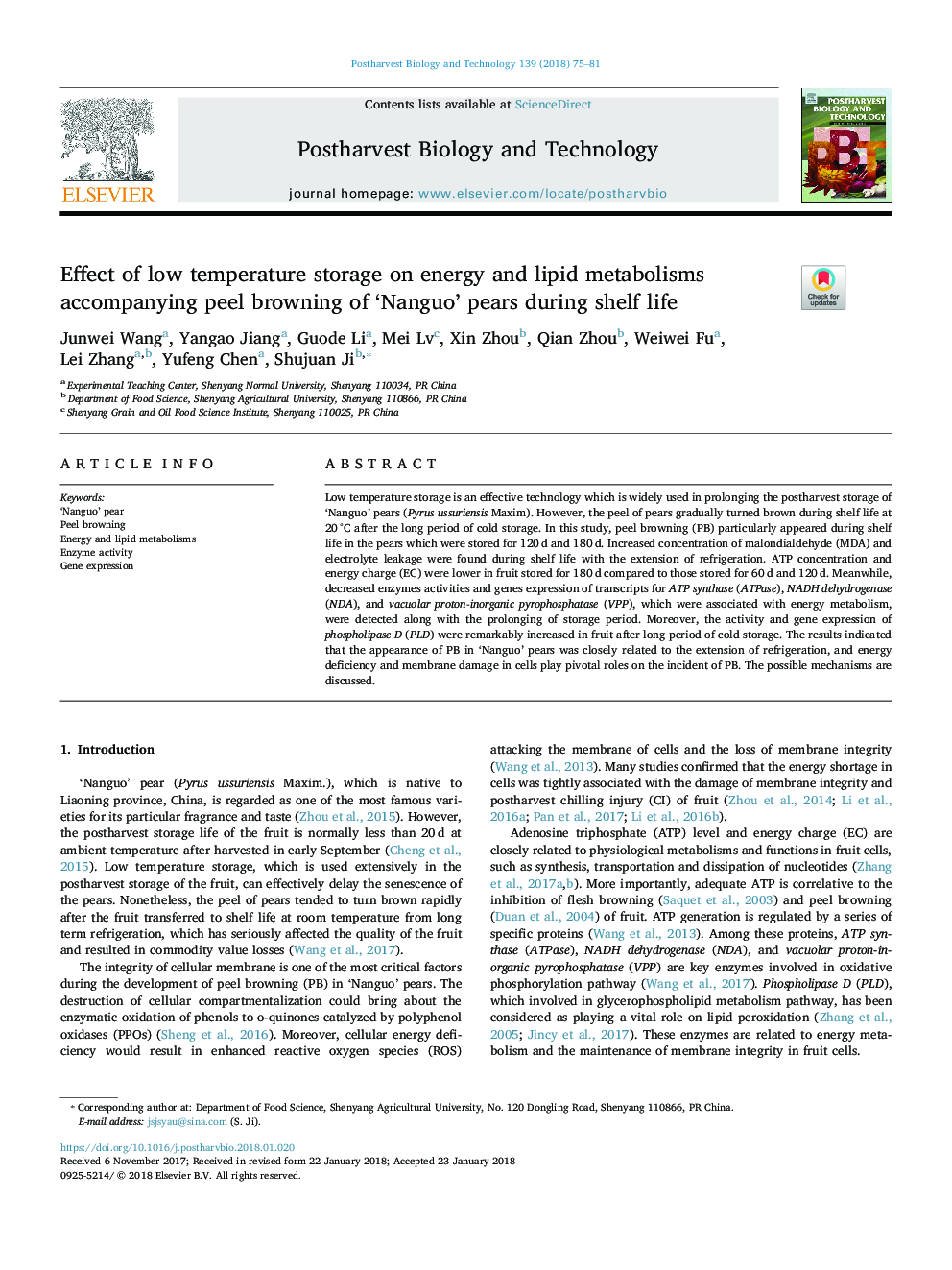| Article ID | Journal | Published Year | Pages | File Type |
|---|---|---|---|---|
| 8881962 | Postharvest Biology and Technology | 2018 | 7 Pages |
Abstract
Low temperature storage is an effective technology which is widely used in prolonging the postharvest storage of 'Nanguo' pears (Pyrus ussuriensis Maxim). However, the peel of pears gradually turned brown during shelf life at 20â¯Â°C after the long period of cold storage. In this study, peel browning (PB) particularly appeared during shelf life in the pears which were stored for 120â¯d and 180â¯d. Increased concentration of malondialdehyde (MDA) and electrolyte leakage were found during shelf life with the extension of refrigeration. ATP concentration and energy charge (EC) were lower in fruit stored for 180â¯d compared to those stored for 60 d and 120â¯d. Meanwhile, decreased enzymes activities and genes expression of transcripts for ATP synthase (ATPase), NADH dehydrogenase (NDA), and vacuolar proton-inorganic pyrophosphatase (VPP), which were associated with energy metabolism, were detected along with the prolonging of storage period. Moreover, the activity and gene expression of phospholipase D (PLD) were remarkably increased in fruit after long period of cold storage. The results indicated that the appearance of PB in 'Nanguo' pears was closely related to the extension of refrigeration, and energy deficiency and membrane damage in cells play pivotal roles on the incident of PB. The possible mechanisms are discussed.
Related Topics
Life Sciences
Agricultural and Biological Sciences
Agronomy and Crop Science
Authors
Junwei Wang, Yangao Jiang, Guode Li, Mei Lv, Xin Zhou, Qian Zhou, Weiwei Fu, Lei Zhang, Yufeng Chen, Shujuan Ji,
